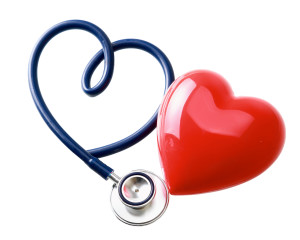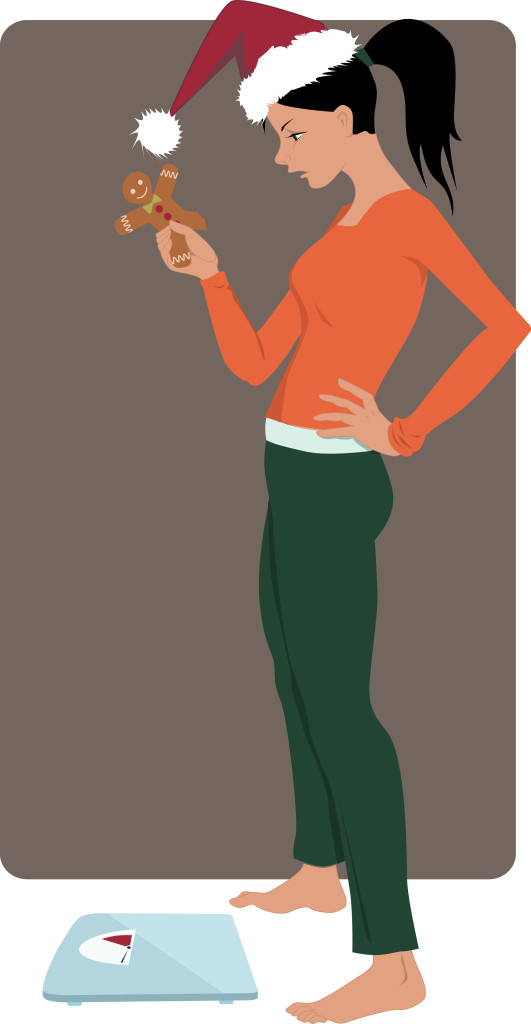What are some of the reasons women and their doctors may discuss hysterectomy options?
If a woman is suffering from endometriosis, heavy menstrual bleeding, fibroid tumors, pelvic prolapse or cancer, removing her uterus may be the only option for relief or an important part of achieving better health.
What are the four approaches to hysterectomy?
- Open hysterectomy. As the name indicates, this is an open surgery, where your uterus is removed through a large incision. The incision has to be large so your surgeon can see your organs and fit his/her hands and instruments inside your body.
- Vaginal hysterectomy. Your surgeon will make a cut in your vagina, operates through this incision and closes it with stitches once your uterus is removed.
- Laparoscopic Hysterectomy. Your surgeon will make two or three small incisions in your abdomen, then operate using long instruments and a tiny camera. The camera sends images to a monitor that the doctors will use to monitor their activity as they operate. Your uterus can also be removed through a single incision in you belly button.
- Robotic hysterectomy. Similar to a laparoscopic hysterectomy, a robotic hysterectomy allows your surgeon to operate through five small abdominal incisions, or one in your navel. The instruments used can bend and rotate far more than the human wrist can. This gives your surgeon improved precision, dexterity and control.
What are the benefits of robotic hysterectomy?
Because there is far less tissue trauma to the abdomen, patients who undergo a robotic hysterectomy may experience:
- Significantly less pain
- Less blood loss
- Fewer complications
- Less risk of infection
- Less scarring due to small incisions
- Shorter hospital stay and shorter recovery time
- A faster return to normal daily activities
Every year, approximately 600,000 American women have hysterectomies. Should you be one of them? If you are suffering from one of the conditions mentioned above, ask your doctor what treatment alternatives might be available to you, or discuss the advantages and disadvantages of the different surgical methods—including cost and insurance coverage.
If you’re looking for a new OB-GYN practice we are accepting new patients? Make an appointment with Chouchani, Sayegh and Bagnarello today.
More
 Have you ever had one of those days where everything seems to go wrong? Your car won’t start, it starts to rain and you don’t have an umbrella, you forget your coffee or your lunch or you can’t find your keys… of course you have. We all do! But next time your day starts to go wrong, try one or more of these proven ways to boost your mood and make you feel better instantly.
Have you ever had one of those days where everything seems to go wrong? Your car won’t start, it starts to rain and you don’t have an umbrella, you forget your coffee or your lunch or you can’t find your keys… of course you have. We all do! But next time your day starts to go wrong, try one or more of these proven ways to boost your mood and make you feel better instantly.
- Turn on Some Tunes. Whether on your car radio or your iPod, put on some music and dance or sing along! (yes, you can dance in the car. Carefully.) A 2003 study in the journal Psychology and Education found that people who listened to music of any kind were instantly happier, calmer and more relaxed. If you’re stressed, music can calm your nerves—literally! It’s the music itself—not the lyrics—that affects mood. So listen to something with an upbeat rhythm and melody.
- Do Unto Others. Try doing something nice for others. Buy a cup of coffee for the person behind you in line at the drive-through, donate to a cause or volunteer your time. Spending as little as $5 on someone else can help you experience increased feelings of satisfaction, according to a 2008 study in the journal Science. And when researchers analyzed 37 studies on volunteering, they found that people who offered their time had a better sense of well-being, were happier with their lives and were less likely to feel sad and anxious.
- Get Outside. Even when the weather is lousy, spend at least five minutes outdoors to help chase your blues away. Appreciate the sun, the snow, the rain or wind, whichever you’re experiencing. And if at all possible, take a quick walk. Research has proved that performing a low-intensity workout outside for even just five minutes can raise your self-esteem and mood levels. Take a walk around the block to calm down and get a positive outlook on life.
- Look Through Pictures That Will Make You Smile. Believe it or not, researchers from the United Kingdom found that looking at happy photos beat out chocolate, wine and watching TV when it comes to lifting your mood. Go through your Facebook feed or go through old photo albums to reminisce over happy times in your life.
- Take a Break From the World. Have you ever meditated or done yoga? If not, try! Sometimes, to boost your mood, you just need a quiet place to breathe. And study after study has shown that meditation can ease anxiety and increase positivity in your mood. Regular yoga practitioners have been found to have higher levels of depression-fighting neurotransmitters. Both practices require you to turn off the outside world to focus on your breaths and your thoughts, which may help you rationalize and rebalance after something has thrown you for a loop.
Chouchani, Sayega and Bagnarello MD cares about your overall health including your mental health. If something feels off or not right, please discuss it with us at your next appointment or make an appointment today.
More
 We all know that smoking causes cancer, lung and heart disease, and stroke. But smoking causes other problems specific to women and their health, such as:
We all know that smoking causes cancer, lung and heart disease, and stroke. But smoking causes other problems specific to women and their health, such as:
And women who smoke often have a tougher time quitting than men. But research is starting to find tips specific to women that can help you quit successfully.
Timing
When you’re ready to quit, wait until just after the end of your period. Research suggests that women who stop smoking 15 days after or before menstruating have more success than those who quit at other times in their cycle. Why? It may be that PMS aggravates withdrawal symptoms, such as irritability and depression.
Body Acceptance
Remind yourself that a little weight gain isn’t the worst thing that can happen to you. You may put on 5 pounds or a little more when you kick the habit, but those extra pounds tend to disappear within a year of quitting. Plus, you’ll still be healthier than you were when you were smoking.
Eating Right
Don’t try to diet while you’re trying to quit smoking. That extra deprivation is a surefire ticket to failure. Focus on eating three healthy meals a day and limiting snacks. Drink plenty of water, too.
Support
Women in general tend to seek and appreciate support when going through a tough time. Whether it’s leaning on a spouse, partner, or friend, or participating in an online forum for ex-smokers, reach out and know you’re not alone in your struggle.
Physical Help
You may want to try nicotine replacement therapy, such as the nicotine patch, gum, or nasal spray. You may need to try more than one option before figuring out which method works best for you. You can also talk to your doctor about prescription cessation aids, such as Zyban or Wellbutrin. Both can be used with nicotine replacement products to boost the likelihood of success.
Move!
Try to get in a fast walk, a brisk swim or even an exercise class to help you stave off nicotine cravings and also burn excess calories.
Quitting the smoking habit is one of the best things you can do for your health. And if you are a pregnant smoker, check out these tips to quit smoking when you are expecting.
If you’re looking for a women’s medical practice that can help you achieve your overall health goals, call Chouchani, Sayegh and Bagnarello M.D. today.
More
 Irritable bowel syndrome (IBS) is a common disorder of the large intestine that commonly causes cramping, bloating, gas, diarrhea and constipation. And it’s a chronic condition that needs to be managed long term.
Irritable bowel syndrome (IBS) is a common disorder of the large intestine that commonly causes cramping, bloating, gas, diarrhea and constipation. And it’s a chronic condition that needs to be managed long term.
Almost everybody gets those symptoms at one time or another, though. How can you know if you have IBS?
The first thing to consider is how often you have these problems and whether they’re accompanied by symptoms such as abdominal pain or discomfort. If the answer is “more than once in awhile,” you should talk to a doctor about being checked for IBS.
For the most part, there aren’t any established tests for IBS. Because the symptoms are so common, doctors have to ask questions that may rule out other possibilities such as inflammatory bowel disease (IBD), colon cancer, or celiac disease.
They should ask if you’ve had nausea, vomiting, fever, persistent pain, blood in the stool, or weight loss. They ask because these particular symptoms are not signs of IBS and may indicate other illnesses.
Your doctor may also order blood and stool tests, which can reveal infection or inflammation. They may ask for a breath test or ask you to temporarily eliminate dairy products from your diet to see if that has an effect.
Some doctors are starting to use a set of guidelines called the Rome III criteria to diagnose IBS. Under these criteria, you must have experienced symptoms for at least 6 months. The symptoms must be present for at least 3 days a month in 3 different months. And they must be associated with at least two of these results:
- A bowel movement relieves the ache and suffering.
- There’s a change in how often the stool comes out.
- The stool looks different.
Other symptoms may point to IBS, such as:
- Bowel movements feel uncontrollably urgent, difficult to pass, or incomplete
- Mucus comes out with the stool
- Bloating or abdominal distension
Two important things to remember: don’t be too embarrassed to talk with your doctor openly and honestly about your symptoms. They’ve seen and heard worse! And don’t be afraid. IBS, unlike ulcerative colitis and Crohn’s disease, which are forms of inflammatory bowel disease, doesn’t cause changes in bowel tissue or increase your risk of colorectal cancer.
Most people with IBS don’t have severe signs and symptoms, and some can control their symptoms by managing diet, lifestyle and stress. If you’re concerned about these symptoms in yourself or in someone you love, call your doctor right away for a consultation.
More
 As we discussed last week, heart disease is the No. 1 killer of women in this country. It causes 1/3 of women’s deaths each year approximately one woman every minute dies of heart disease. So what can you do to protect yourself from heart disease?
As we discussed last week, heart disease is the No. 1 killer of women in this country. It causes 1/3 of women’s deaths each year approximately one woman every minute dies of heart disease. So what can you do to protect yourself from heart disease?
Know Your Risk Factors
Eighty percent of women from the ages of 40 to 60 have one or more risk factors for heart disease—which dramatically increases your chance of developing a problem.
And it’s not just women over forty. Heart disease can begin as early as the teen years, and women in their 20s and 30s need to take action sooner rather than later to avoid worse complications later on.
Also, among U.S. women ages 18 and older, 17 percent are smokers. Sixty-four percent of women ages 20 and older are overweight, 27 percent have high blood pressure, and 45 percent have high cholesterol. These are all major risk factors for developing heart disease
Lower Your Risk
In addition to the risk factors above, you may have a genetic tendency toward heart disease, which is something you can’t control. But there are several lifestyle changes any woman can make to reduce the risk of heart disease:
- Quit smoking—or don’t start!
- Exercise 30 to 60 minutes a day most days; exercise for 60 to 90 minutes at a time if you need to lose weight.
- Maintain a healthy weight.
- Eat a diet that’s low in saturated fat, cholesterol and salt.
- Take prescribed medications appropriately, including blood pressure medications, blood thinners and aspirin.
- Manage other conditions that can contribute to heart disease, such as high blood pressure, high cholesterol and diabetes.
And remember, even if you exercise regularly and eat right, you may still have heart disease or a contributing factor. Maintain a good relationship with your doctor and make sure you visit regularly and discuss your family history and your current state of health honestly.
If necessary, work with your doctor to help yourself quit smoking, lose weight or eat better. It’s never too late to work toward a healthier life for yourself!
When you are a patient at Chouchani, Sayegh and Bagnarello, we care about your overall health and would be glad to help you find the solutions you need to lower your risk of heart disease.
More
 Today is National Wear Red Day to raise awareness of heart disease and women.
Today is National Wear Red Day to raise awareness of heart disease and women.
Did you know that each year, heart disease claims the lives of more women then breast cancer and lung cancer combined? And that more women die every year from heart attacks than men? In fact, heart disease is the No. 1 killer of women in this country. What does that mean for you?
Consider this: heart disease is more likely to kill you than cancer, even breast cancer. And like cancer, heart disease does not discriminate—it’s just as likely to affect or kill young women, not just the older population.
What is heart disease?
The American Heart Association uses the term heart disease to cover several problems related to plaque buildup in the walls of the arteries, or atherosclerosis. As the plaque builds up, the arteries narrow, making it more difficult for blood to flow and creating a risk for heart attack or stroke.
Other types of heart disease include heart failure (where the heart doesn’t pump enough blood), an irregular heartbeat—arrhythmia—and heart valve problems.
What causes heart disease?
The usual suspects are the same for both men and women: high cholesterol, high blood pressure, smoking and/or being overweight. But certain other factors seem to play a bigger role in the development of heart disease in women, such as:
- Diabetes
- Metabolic syndrome—a combination of fat around your abdomen, high blood pressure, high blood sugar and high triglycerides
- Mental stress and depression
- Lack of physical activity
- Low levels of estrogen after menopause
- Pregnancy complications such as high blood pressure or gestational diabetes
All of these conditions can damage the lining and inner layers of the coronary (heart) arteries.
Signs and Symptoms of Heart Attack in Women
Believe it or not, many women don’t even recognize the signs of heart attack in themselves. The symptoms can be quite different from men’s, and they’re not always as dramatic as a feeling of tightness or pressure in the chest. And because it’s vitally important to get appropriate care as quickly as possible, women need to know these symptoms.
In addition to squeezing chest pain or pressure, both men and women may experience shortness of breath, sweating, pain in the shoulders, neck, arm, or jaw or a feeling of heartburn or indigestion, sometimes accompanied by nausea and vomiting, when a heart attack is coming on. Symptoms more likely in women include:
- Indigestion or gas-like pain
- Dizziness or nausea
- Unexplained weakness or fatigue
- Discomfort or pain between the shoulder blades
- Recurring chest discomfort
- A sense of impending doom
If you are experiencing any of these symptoms regularly, especially with sudden onset, call 911 immediately.
Next week, we will discuss tips for lowering your risk of heart disease.
More
 You may have heard by now that if you live north of the Mason-Dixon line, your body can’t make enough Vitamin D for nearly 6 months of the year. From approximately November through March, sunlight is insufficient to stimulate the production of Vitamin D in skin. Why should you care?
You may have heard by now that if you live north of the Mason-Dixon line, your body can’t make enough Vitamin D for nearly 6 months of the year. From approximately November through March, sunlight is insufficient to stimulate the production of Vitamin D in skin. Why should you care?
Because Vitamin D deficiency has been linked to increased risk of asthma, cancer, heart disease, diabetes and seasonal affective disorder, among other conditions. We also need it for healthy bones. And unlike almost any other nutrient, you can’t get enough Vitamin D from food alone no matter how well you eat.
Other Sources of Vitamin D
When you can’t get enough sunlight to make Vitamin D on your own, you have to turn to other sources. Very few foods naturally contain Vitamin D. Fatty or oily fish such as salmon, tuna, and mackerel provide some, and small amounts of the vitamin are found in beef liver, cheese, and egg yolks. Some dairy products like milk and yogurt and even some juices and cereals are fortified with D.
However, most people have to turn to supplements during the winter months, or during the summer months if you spend most of your time inside. The amount you take will depend on many factors, including where you live, your age, whether you use sunscreen, and the color of your skin. You should always consult with a doctor before taking any vitamin supplement, so you don’t make yourself ill by taking too much or waste your money by taking too little to be helpful.
Vitamin D and Women’s Health
Pregnant women need extra Vitamin D: it supports healthy bone development in the baby, and deficiency is related to preeclampsia for the mother. The average prenatal vitamin doesn’t contain enough Vitamin D, so be sure to ask your OB-GYN if you need additional supplementation.
And if you’re trying to get pregnant and struggling with infertility? Vitamin D deficiency may be playing a role. Be sure to ask your doctor to test your levels if you are having difficulty conceiving.
If you’re looking for an OB/GYN practice that cares about your overall health, call to make an appointment at one of Chouchani, Sayegh and Bagnarello’s three locations. We look forward to meeting you!
Photo courtesy of freedigitalphotos.net.
More
 After giving birth, you may get the “baby blues” for a week or two. You might experience mood swings, feelings of ambivalence toward motherhood, mild depression, and the tendency to burst into tears for no apparent reason. This stage is probably a result of hormonal changes, the isolation new mothers often feel, residual discomfort or pain, and most certainly lack of sleep! But some women, up to 1 in 7, experience a much more serious mood disorder—postpartum depression (PPD).
After giving birth, you may get the “baby blues” for a week or two. You might experience mood swings, feelings of ambivalence toward motherhood, mild depression, and the tendency to burst into tears for no apparent reason. This stage is probably a result of hormonal changes, the isolation new mothers often feel, residual discomfort or pain, and most certainly lack of sleep! But some women, up to 1 in 7, experience a much more serious mood disorder—postpartum depression (PPD).
Unlike the baby blues, PPD doesn’t go away on its own. It can appear any time, even months, after delivering a baby, and it can last for many weeks or months if left untreated. PPD can affect your ability to take care of your baby, or yourself, or both. And PPD can affect any woman, regardless of health, experience, marital status, income, age, race or ethnicity, culture or education.
What are the warning signs of PPD?
The top 10 signs of postpartum depression include:
- Change in appetite, either an increase or a decrease.
- Change in sleep, whether you can’t fall asleep or stay asleep, or you want to sleep all the time.
- Anxiety, agitation or irritability, including worrying constantly about your baby or being fearful of leaving the house or visiting public places.
- Decrease in energy, concentration, or ability to accomplish tasks. This can include having trouble getting up, out of bed, and going in the morning.
- Loss of interest in activities that you once enjoyed.
- Feelings of guilt or worthlessness, or worrying that you’re not a good parent.
- Inability to care for yourself or your baby.
- Complete lack of libido.
- Negative feelings towards or disinterest in your baby.
- Thoughts of harming yourself or your baby.
If you have any thoughts of harming yourself or your baby, DO NOT WAIT! Contact your healthcare provider IMMEDIATELY!
If you experience one or more of the other signs and symptoms of postpartum depression for two weeks or more, it is time to seek additional help from your obstetrician, midwife, primary healthcare provider or a therapist or social worker
You may need counseling, medication or both. Don’t be embarrassed to seek help! You are not alone, and you are not the only one to have the feelings you’re experiencing.
The doctors at Chouchani, Sayegh and Bagnarello care for our patients before, during and after pregnancy. Your health (including your mental health) is a priority for a happy mom and baby.
More
 If you’re like thousands if not millions of Americans, you make New Year’s resolutions. And chances are, at least one of those resolutions has something to do with improving your health. Good for you! You only get one body in this lifetime, so taking care of it is important. Here’s how to succeed at keeping your resolutions:
If you’re like thousands if not millions of Americans, you make New Year’s resolutions. And chances are, at least one of those resolutions has something to do with improving your health. Good for you! You only get one body in this lifetime, so taking care of it is important. Here’s how to succeed at keeping your resolutions:
1. Write them down
Research has proved that people who write down their goals are more likely to achieve success. Break down your main goal—to lose weight, to eat better—into manageable steps. You can also break it down by time: monthly, weekly or daily.
2. Start small, then go big
So many people fail at their weight loss or healthy eating goals because they try to go from couch potato to marathon runner in January or give up everything they like to eat nothing but salad. Instead, start teaching yourself new habits one step at a time. Start off with something easy, like a 15-minute walk around the block. Once you’ve accomplished that, kick it up a notch. Keep going until you’re at the level of fitness you wanted to achieve. As for food, don’t think of anything as “bad” or “wrong.” Just remember that food is fuel, and plan to fuel yourself with healthier options.
3. Pay ahead of time
If you decide to take a workout class or join a gym, pay in advance. Once you’ve handed over the money, it’s harder to justify not going.
4. Plan your meals, snacks and drinks
Instead of deciding at the last minute what you’ll eat and drink all day, come up with a plan for healthy eating for the week and shop accordingly. Pack lunches to bring to work, or decide ahead of time what you’ll order from a nearby restaurant. And you’ll be less inclined to visit the vending machines at work if you have a variety of healthier snacks to choose from.
5. Do it now (whenever now is)
Instead of saying you’ll start tomorrow, do something good for yourself now. Drink an extra glass of water, reach for a healthy snack, take yourself out for a walk or run, or take 20 minutes to yourself to relax and read. Little changes add up.
6. Remember you’re human.
Instead of dwelling on slip-ups, be kind to yourself. Vow to get back on track instead of letting one unhealthy decision derail your progress.
What are your goals for better health in 2015? Share them below! And if you’re looking for an OB-GYN team that makes your health a priority and helps you achieve your goals, call Chouchani, Sayegh and Bagnarello and make an appointment. We are accepting new patients. And if you’re looking for more healthy tips for women, check out the patient education section of our website.
More
 The holidays are a great time for family get-togethers, conversation and of course, food. For those of us trying not to gain the 25 pounds of Christmas, following these simple tips and tricks can keep you trim this holiday season while still letting you sneak a few bites of those steaming hot gingerbread men.
The holidays are a great time for family get-togethers, conversation and of course, food. For those of us trying not to gain the 25 pounds of Christmas, following these simple tips and tricks can keep you trim this holiday season while still letting you sneak a few bites of those steaming hot gingerbread men.
Balance your beverages
Having holiday-themed drinks can be fun, and tasty, but are best consumed in moderation. Hot chocolate, eggnog, apple cider, holiday lattes etc. can be high in sugar and fat, leaving your diet plan damaged by the end of the day. However, the following small changes can help make your drink choices a little less detrimental:
- Avoid adding marshmallows, whipped cream or “drizzle” to your beverages
- Mix eggnog or hot chocolate with half a glass of skim/low-fat milk
- Look for low-fat/low-sugar options
- Avoid adding alcohol, as it mostly adds extra sugar and calories
- Drink a glass of water after each specialty beverage to help fill your stomach and prevent overconsumption
Eat smart, don’t be a Scrooge
Starvation and dietary self-sacrifice during the holiday dinners and parties will only lead to aggravation and irritation. Besides, no one wants to hear about and all the things you can’t eat while they tear into that Christmas turkey. However, the next few adjustments can help keep you, your belly and your loved ones happy this season:
- Choose light over dark meat and avoid eating the skin for less calories and fat
- Be aware of how much you’re putting on your plate
- Avoid too much gravy or dressing in order to limit fat, calories and sodium
- Choose whole-grain breads, lean meats, nuts, veggies and fruits for appetizers
- Consume sweets/deserts in moderation or split your choice with a friend
Kitchen smart, kitchen savvy
Whether cooking for a work party or family dinner, making smarter food choices can help you and others have a healthier holiday.
- Use fresh fruits and vegetables instead of the canned option
- Use herbs and spices to flavor your masterpiece instead of loading it up with butter and salt
- Complement heavy dishes with roasted vegetables or a tossed salad
- Use whole-wheat flour instead of white flour when baking
- Cook with vegetable or olive oil instead of butter
- Use low-fat or skim milk instead of heavy cream
- Add dried fruit to baked goods instead of candies or chocolate chips
- Flavor dishes with vanilla, almond and peppermint extracts instead of butter and sugar
Win over the workplace
Work parties and functions can be the most difficult place to refuse poor food choices. But, by signing up to bring your own dish you can provide a healthy option for you and others.
Making sure to eat healthy throughout the day can also prevent you from overeating poor food choices later by keeping your stomach full and satisfied, and your mind away from unhealthy cravings.
Avoid fried and buttered foods and keep away from items with an abundance of cheese and cream. Supplement instead with grilled items, vegetables and dip or whole grain crackers.
Stay active despite the snow
The change in the weather means more layers, less daylight and an overall tendency to avoid leaving the house whatsoever. However, one of the best ways to retain your fitness physique is by beginning or maintaining an exercise regimen.
If you choose to workout outside, it’s important to wear the right gear, usually including sweat-wicking fabrics, and to keep important parts of your body covered with gloves, ear bands etc. It’s important to stay hydrated by drinking fluids before and after your workout, even if you aren’t thirsty.
Taking a walk, stretching or playing a holiday party game can be a great way to get your digestive system moving after dinner.
The holidays can be a great time to relax and enjoy time with family, friends and loved ones. This season, don’t let your inner Grinch take over! Keep an eye on the little choices you make. After a while, those calories can really add up!
More









